How to travel in Japan on a budget
Japan is a notoriously pricey place to travel. It is often regarded as one of the most expensive countries in the world, with cities like Tokyo getting mention alongside Singapore, Dubai, and New York City, when discussing pricey vacations. However, if you are willing to put in the effort, you can have a great and inexpensive trip to Japan that won’t cost you an arm and a leg. I am always up for the challenge of keeping it cheap in an expensive place (flashbacks to sharing a Motel 6 bed with my best friend in Las Vegas.) I’m not claiming to have the perfect model for everyone, though. It is ultimately your own journey. I am just sharing with you how we made Japan work for our budget.
Flights and Flying to Japan from the USA
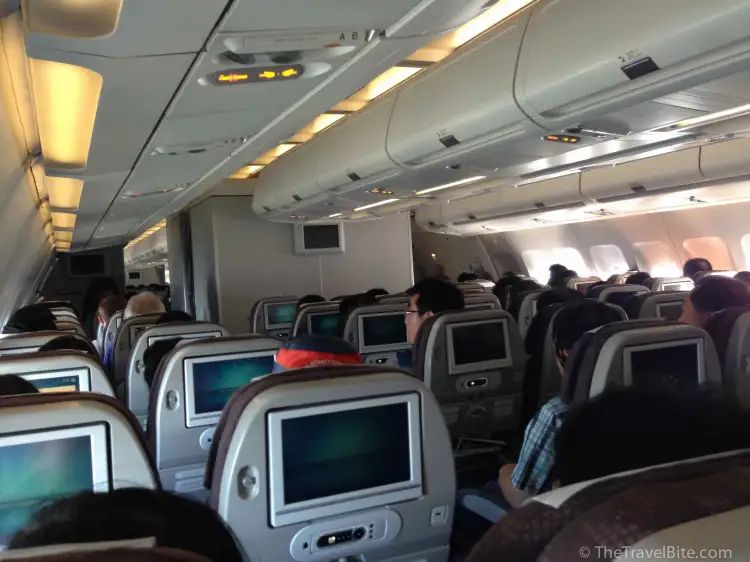 So, first thing’s first, let’s talk flights. We booked our flights to Japan on Kayak.com about 3 months in advance. Any flight to Asia from the U.S. is recommended that you book at least 90 days in advance to receive the best rate, but I don’t know if there is any real truth to that. We purchased one-way tickets on Korean Airlines and flew from Denver to Seattle, Seattle to Seoul, and then Seoul to Tokyo. We always pick the cheapest flight option offered when we travel, regardless of the number of stops or length of the layovers. It was 20 hrs total in travel time from the time we departed Denver until we arrived in Tokyo. Those tickets were $530 each for the middle of May. Those tickets may be even cheaper if you are flying directly out of an airport on the west coast because we obviously had to make that first connection.
So, first thing’s first, let’s talk flights. We booked our flights to Japan on Kayak.com about 3 months in advance. Any flight to Asia from the U.S. is recommended that you book at least 90 days in advance to receive the best rate, but I don’t know if there is any real truth to that. We purchased one-way tickets on Korean Airlines and flew from Denver to Seattle, Seattle to Seoul, and then Seoul to Tokyo. We always pick the cheapest flight option offered when we travel, regardless of the number of stops or length of the layovers. It was 20 hrs total in travel time from the time we departed Denver until we arrived in Tokyo. Those tickets were $530 each for the middle of May. Those tickets may be even cheaper if you are flying directly out of an airport on the west coast because we obviously had to make that first connection.
*Japan does claim that you need to show “proof of onward travel” at customs and immigration, but we were never asked to show ours.
Cheap Accommodations & Airbnb in Japan
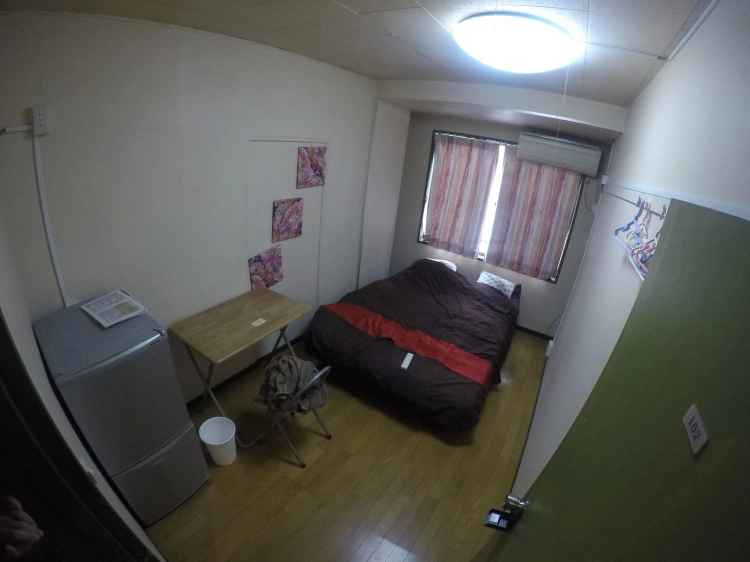 There are hostels in Japan, but not as common as elsewhere in Asia and certainly not the type we would normally sleep in. Hostels in Japan can cost anywhere from $20 to $40 a night per person to sleep on a bunk bed in a shared dorm with a lot of other people. Hostels in Japan are an okay option for someone who is traveling solo and perhaps doesn’t require much personal space. We are traveling as a couple, though, so hostel prices just mean double the rate for us and none of the privacy. Airbnb is definitely the way to go if you want a cheap place to stay in Japan. Even if you are traveling alone, most Airbnb accommodations will still beat the price of any decent hostel or capsule hotel. With Airbnb, you basically get your own apartment for the same price as a dorm bed in a hostel. The photo shown here is an example of a room we got in Tokyo on Airbnb for $22/night. It was in a great part of town close to the subway and had everything else we needed in walking distance. We paid the same price for a similar room in Kyoto that had a mini kitchen and a private bathroom.
There are hostels in Japan, but not as common as elsewhere in Asia and certainly not the type we would normally sleep in. Hostels in Japan can cost anywhere from $20 to $40 a night per person to sleep on a bunk bed in a shared dorm with a lot of other people. Hostels in Japan are an okay option for someone who is traveling solo and perhaps doesn’t require much personal space. We are traveling as a couple, though, so hostel prices just mean double the rate for us and none of the privacy. Airbnb is definitely the way to go if you want a cheap place to stay in Japan. Even if you are traveling alone, most Airbnb accommodations will still beat the price of any decent hostel or capsule hotel. With Airbnb, you basically get your own apartment for the same price as a dorm bed in a hostel. The photo shown here is an example of a room we got in Tokyo on Airbnb for $22/night. It was in a great part of town close to the subway and had everything else we needed in walking distance. We paid the same price for a similar room in Kyoto that had a mini kitchen and a private bathroom.
Transportation Between Cities in Japan
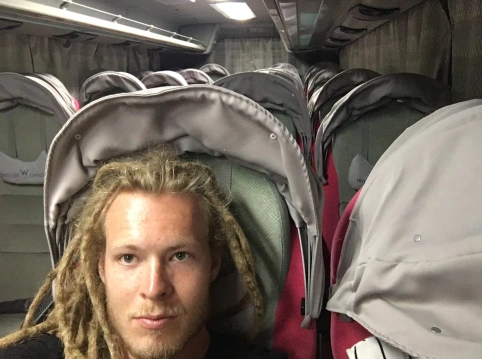 When it comes to traveling from city to city in Japan, buses are a much more affordable option than the bullet trains. Specifically night buses. Japan is of course known for its high-speed rail systems. However, taking the train between major cities is just about the most expensive option, even more than flying sometimes we noticed. We found that the cheapest option for long distance travel in Japan is to take the long distance night buses from the company Willer Express. A ticket from Tokyo to Kyoto was about $35 and then Kyoto to Hiroshima was the same. As an added advantage, you are also saving the money you would’ve had to have spent on a hotel that night by taking the night bus instead of the day one. Drink yourself some sake first and sit back and relax.
When it comes to traveling from city to city in Japan, buses are a much more affordable option than the bullet trains. Specifically night buses. Japan is of course known for its high-speed rail systems. However, taking the train between major cities is just about the most expensive option, even more than flying sometimes we noticed. We found that the cheapest option for long distance travel in Japan is to take the long distance night buses from the company Willer Express. A ticket from Tokyo to Kyoto was about $35 and then Kyoto to Hiroshima was the same. As an added advantage, you are also saving the money you would’ve had to have spent on a hotel that night by taking the night bus instead of the day one. Drink yourself some sake first and sit back and relax.
Ground Transportation in Japan
 In our 30 days there, we did not take a single cab or taxi while in Japan. When every dollar counts, walking your ass across town instead of paying for transportation is always a great option. This is especially true if you don’t have any sort of time constraints. My wife wears a Fitbit so we were actually able to look back and see how far we actually walked some days. For example, our first day in Kyoto, we walked 13 miles. All of the places normal people would hail a taxi, we just took off walking instead. We walked straight from the bus station across town to our room. Then walked all over the city visiting temples and shrines all day. We have had some of our best adventures walking around cities.
In our 30 days there, we did not take a single cab or taxi while in Japan. When every dollar counts, walking your ass across town instead of paying for transportation is always a great option. This is especially true if you don’t have any sort of time constraints. My wife wears a Fitbit so we were actually able to look back and see how far we actually walked some days. For example, our first day in Kyoto, we walked 13 miles. All of the places normal people would hail a taxi, we just took off walking instead. We walked straight from the bus station across town to our room. Then walked all over the city visiting temples and shrines all day. We have had some of our best adventures walking around cities.
Walking isn’t always a possibility, though, in which case the subway is the way to go if there is one. In Tokyo you can get to any part of town on the subway for $2-4. Sometimes we would take the subway somewhere really far and then walk back, so it’s not as bad as walking both ways or as pricey as taking the subway both ways. Split the difference. Most of the major cities in Japan have some sort of subway or light rail train system in place.
My advice for getting around Japan is to use the public buses and subways before you go for a taxi and think twice before getting the bullet train pass if you aren’t in a hurry. There are rail passes that are worth the money if you plan on covering a large area in a short amount of time, but the passes are valid in weekly increments, so if you plan on staying in a town for more than a week, you wont get to fully utilize a rail pass enough to justify it.
Eating Food in Japan on a Budget
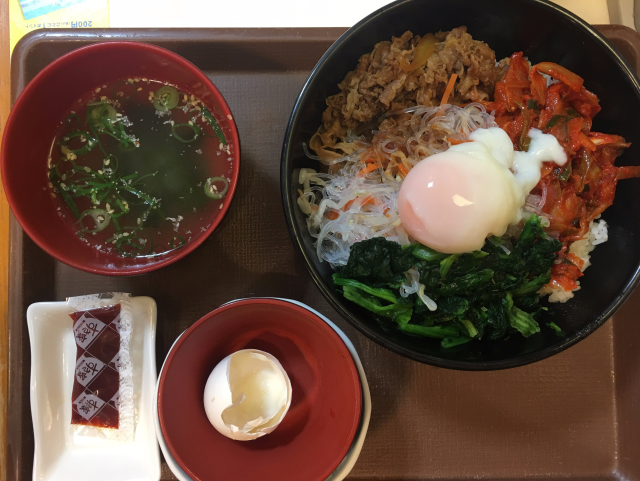 There are plenty of small restaurants in most cities in Japan where $5-$6 gets you what you see here. We have ate at least one meal a day like this most of the time we were in Japan. One tip is to try to make it until 11 am or so before our first meal. That way we end up just having two big meals in a day instead of trying to eat out for breakfast, lunch, and dinner. We also like to stay in places that have some sort of shared kitchen and we can save money by cooking for ourselves. We didn’t find that in most of our places in Japan, though, so we typically tried to just eat cheap all day and then go out for a good meal at a restaurant at night. There are sushi conveyor belt restaurants that are 100 YEN (about $1 usd) per plate where you can get pretty stuffed and drink as much matcha green tea as your heart desires while you do so. Otherwise, there are a number of chain restaurants that sell various rice bowls, eel, and curry. Then of course there are the ramen restaurants that exist on pretty much every block, where a nice bowl of jin ramen will only set you back about $6 usd.
There are plenty of small restaurants in most cities in Japan where $5-$6 gets you what you see here. We have ate at least one meal a day like this most of the time we were in Japan. One tip is to try to make it until 11 am or so before our first meal. That way we end up just having two big meals in a day instead of trying to eat out for breakfast, lunch, and dinner. We also like to stay in places that have some sort of shared kitchen and we can save money by cooking for ourselves. We didn’t find that in most of our places in Japan, though, so we typically tried to just eat cheap all day and then go out for a good meal at a restaurant at night. There are sushi conveyor belt restaurants that are 100 YEN (about $1 usd) per plate where you can get pretty stuffed and drink as much matcha green tea as your heart desires while you do so. Otherwise, there are a number of chain restaurants that sell various rice bowls, eel, and curry. Then of course there are the ramen restaurants that exist on pretty much every block, where a nice bowl of jin ramen will only set you back about $6 usd.
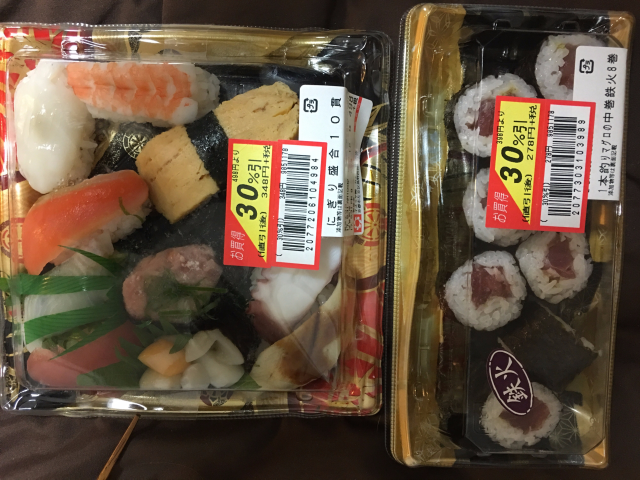 The food and restaurant scene in Japan is obviously one of the best in the world and we definitely went out to our fare share of good Japanese restaurants. However, when we really wanted to penny pinch, we would go to the grocery stores and look for pre-prepared meals like sushi or rice bowls. Many of the large grocery stores (especially on the basement level of the subway terminals) mark all of this type of food down as much as 50% at around 5-6 pm each day. That is when you can get yourself an entire plate of fresh sushi like these for only $3. Many of these grocery stores are located in the basement level of the buss/train terminals and also in large shopping malls.
The food and restaurant scene in Japan is obviously one of the best in the world and we definitely went out to our fare share of good Japanese restaurants. However, when we really wanted to penny pinch, we would go to the grocery stores and look for pre-prepared meals like sushi or rice bowls. Many of the large grocery stores (especially on the basement level of the subway terminals) mark all of this type of food down as much as 50% at around 5-6 pm each day. That is when you can get yourself an entire plate of fresh sushi like these for only $3. Many of these grocery stores are located in the basement level of the buss/train terminals and also in large shopping malls.
Drinking in Japan on a Budget
 If you are on a tight budget, you probably won’t order drinks at many restaurants in Japan. Apparently, the mark up on beer and sake is really high. I haven’t seen any restaurants that will pour a full glass of beer for under $5. That’s typical in the U.S. and Europe too, but in Japan, those same beers are sold in every gas station and grocery store for just $1-$2. As recent college graduates, we like to indulge in some brews from time to time. In Japan, the best way to try the local spread is by shopping for beer at a grocery store or convenience store and then finding yourself a nice park or river to sit by and enjoy them. Just keep it on the down low and be respectful.
If you are on a tight budget, you probably won’t order drinks at many restaurants in Japan. Apparently, the mark up on beer and sake is really high. I haven’t seen any restaurants that will pour a full glass of beer for under $5. That’s typical in the U.S. and Europe too, but in Japan, those same beers are sold in every gas station and grocery store for just $1-$2. As recent college graduates, we like to indulge in some brews from time to time. In Japan, the best way to try the local spread is by shopping for beer at a grocery store or convenience store and then finding yourself a nice park or river to sit by and enjoy them. Just keep it on the down low and be respectful.
*It is supposedly considered “taboo” in Japan to be walking around eating or drinking anything.
Sake isn’t as popular as I thought it would be either. Most people are drinking beer, wine, or champagne. However, you can buy a number of good bottles of sake for less than $10 and really cheap jugs of sake for even less than that. The “BIG CUP” brand of cheap sake from the convenience store is just $2.
Free or Cheap Budget Activities in Japan
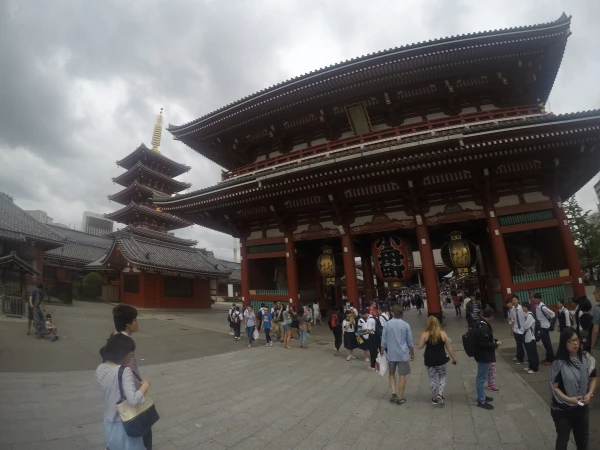 There was so much to do in every city in Japan we visited for free, it makes it hard to justify paying for any activities at all. Most of the temples and shrines are free to enter, as are many of the smaller museums. Hiking trails and outdoor natural spaces are almost always free in Japan as well, assuming you don’t have to pay for parking. When we did decide to pay an admission fee to see something, we always asked about student pricing. If you look under 35 and are foreign, most places will take you at your word that you are a student and give you a discount if one is offered. While in Kyoto we visited probably 20 different temples and shrines and only paid to enter one of them (still leaving donations when appropriate.)
There was so much to do in every city in Japan we visited for free, it makes it hard to justify paying for any activities at all. Most of the temples and shrines are free to enter, as are many of the smaller museums. Hiking trails and outdoor natural spaces are almost always free in Japan as well, assuming you don’t have to pay for parking. When we did decide to pay an admission fee to see something, we always asked about student pricing. If you look under 35 and are foreign, most places will take you at your word that you are a student and give you a discount if one is offered. While in Kyoto we visited probably 20 different temples and shrines and only paid to enter one of them (still leaving donations when appropriate.)
Budget Travel and Backpacking in Japan on the Cheap
We really enjoyed traveling around Japan. We spent exactly one month in the country in May-June of 2017 without any plans besides seeing as much as we could. Japan is definitely not as cheap as some neighboring Asian countries, but it’s easy enough to make it work for your budget. The higher cost of living is a good sign for the people of Japan. Their economy is doing well and they are reaping the benefits. Everyone seems to have plenty of discretionary income to go out to dinners and go shopping on a regular basis. Japanese people have the same access to the same luxuries any western country enjoys and then some. I recommend getting over to Japan ASAP, before the travel bloggers let the secret out that expensive Japan can be pretty cheap. 😉
